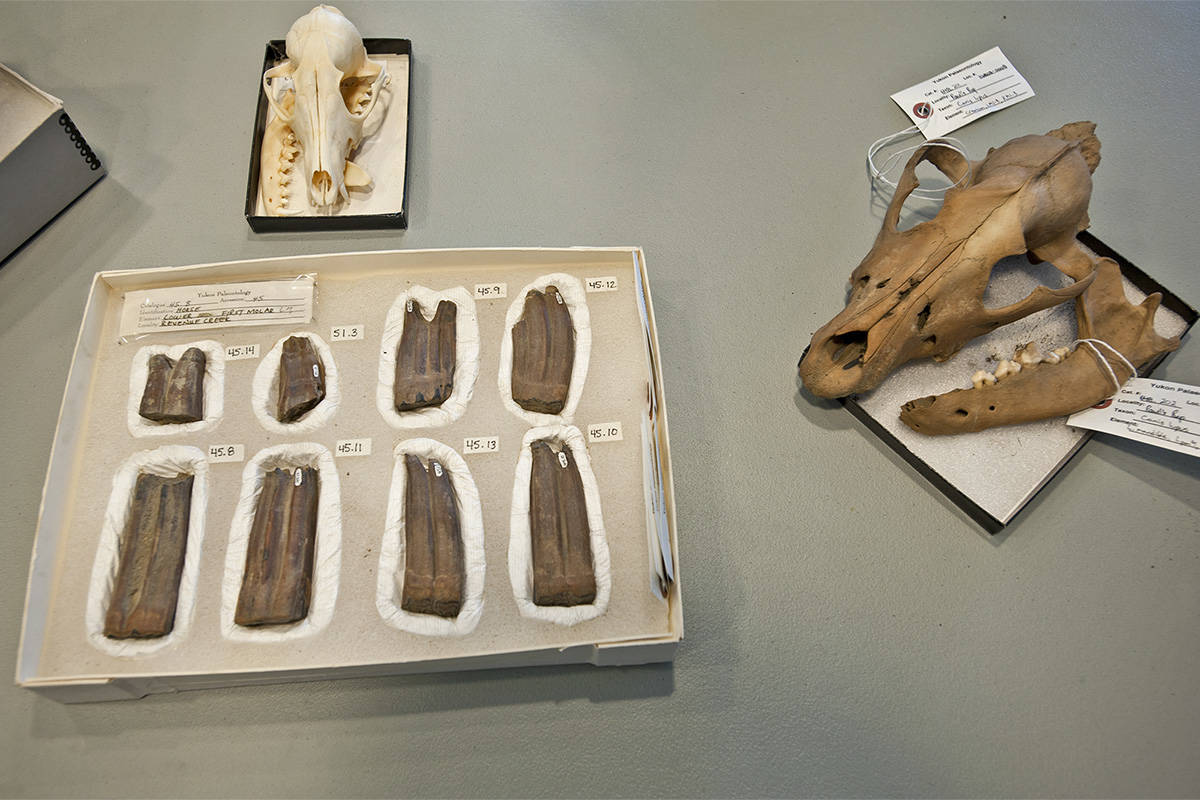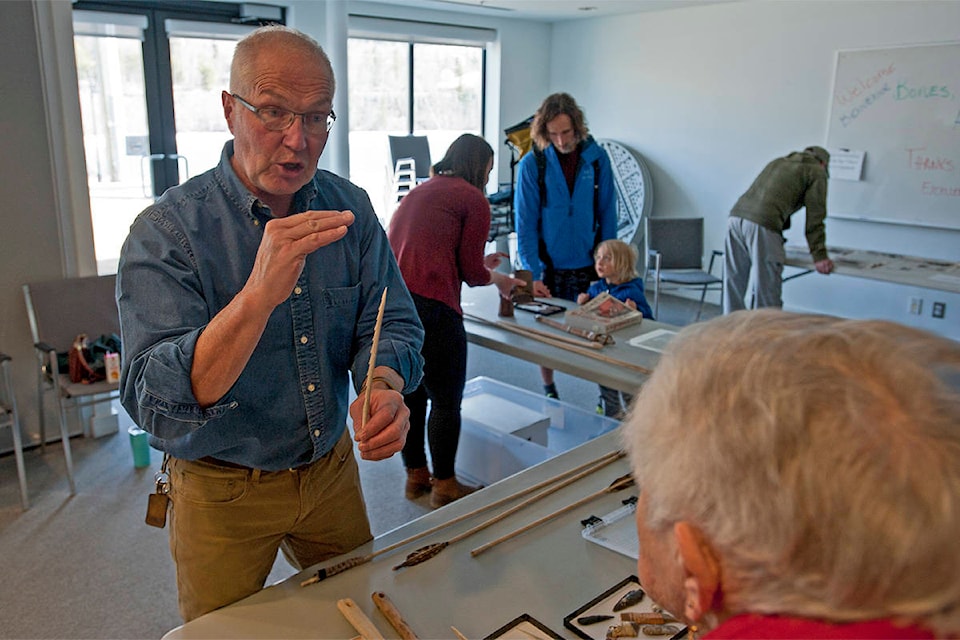You are out walking on one of the Yukon’s many trails, say, perhaps with your dog, but always with a can of bear spray, until your foot meets something. It looks weird, taking on the appearance of a fresh loaf of French bread, maybe. It could be a “leave-‘er-right” (leave it right there). It could be a fossilized creature. Who knows.
Some do, like the archeologists and paleontologists who were on-hand at the Whitehorse library on April 27 as part of this year’s Bones, Bottles and Birch Bark Baskets, an event where people can have their strange finds analyzed, demystified on-site.
“A lot of it is just curiosities, like an unusual accretion in a rock,” said Michael Dougherty, “co-convener” of Long Ago Yukon, which facilitates the event.
A skipping stone with two circles and bar in the middle, almost like a division sign, was brought in earlier years, he said.
“Stuff like that. You’re going like, ‘Who made that, and why?’ That puzzled our people here. It’s neat. It’s a neat thing, but is it archeologically significant? No, but it’s neat!”
Some people have stored things away for years, unaware of their historic value, if any, he said.
“There’s some old tin cans,” Dougherty said excitedly, gesturing towards a few.
There were some discoveries brought in over the weekend that could be called significant.
Isabella Demers holds a large horn, its insides a series of deep, web-like canals.
It was found by her father in the early 90s at a mine site, she said.
“It’s about 40,000 years old, she thinks,” she said, referring to Elizabeth Hall, an assistant paleontologist who identified it as being a bison horn. “It’s very powerful and special holding something that’s from an animal that’s long gone.”
Isabella’s grandmother, Candice Demers, said she has items in her collection that she hasn’t known what to do with.
That’s changed.
“This,” she said, referring to the event, “is excellent. I found a lot of interesting information here.”
Greg Hare, a retired archeologist who was on-hand over the weekend, provided this reporter with the whereabouts of obsidian in the territory, a smooth, strikingly jet-black volcanic rock, once used to tip spears and arrows.
“I love doing this because it gives a chance to explain to people what we do. It sort of gives them an idea of what happens when collections are found, because people find things all the time.”
Artifacts, he said, “are way better off being part of the community’s heritage than on the mantelpiece in their house.”
Hall, the assistant paleontologist, said Yukoners should keep in mind legislation stipulating that historical discoveries found prior to 1996 become public property.
While residents can have their finds verified as ancient history or complete junk — maybe cool junk — at the event, there are other benefits.
“It just creates that greater body of an aware public that assists in building that complex picture of our heritage,” Dougherty said.
There are few archeologists and paleontologists in the Yukon, he said. As a result, average people can be the eyes on the ground.
“There’s a whole lot of us walking in the woods, and so how do you create a broader public that’s aware and concerned about Yukon heritage? I think this is an engagement point that is helping the educational and sensitivity process.”
The Yukon is a place where people can easily sink their teeth into new things, Dougherty said — and have fun.
Indeed, on several occasions, Dougherty, while happily surveying the room, would say, in quick succession, “Fun, fun, fun. Are we having fun?”
“You can see the lively conversations and the people are interested,” he said. “This is developing not only a life-long interest, but maybe an avocation.”
Contact Julien Gignac at julien.gignac@yukon-news.com

